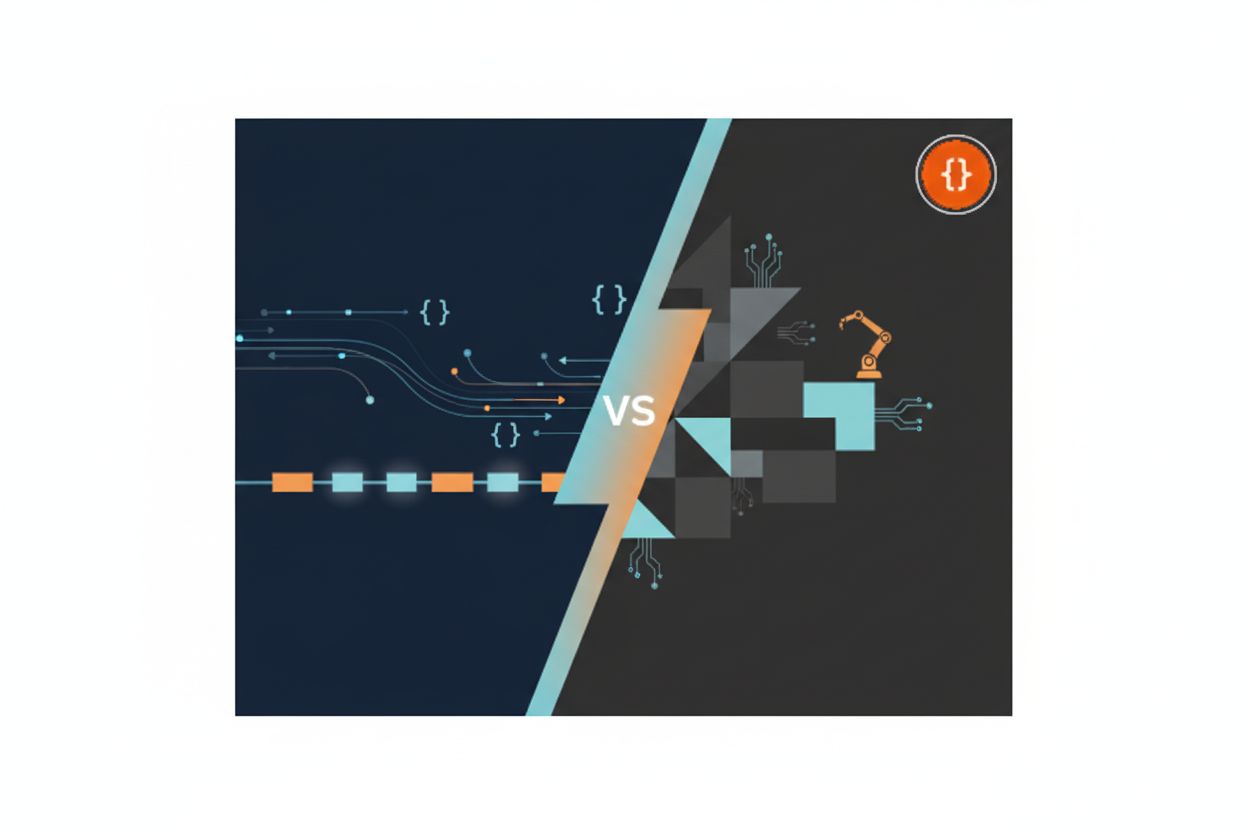API Contract Testing
TL;DR
What is ?
Alright, so you're building microservices and need 'em to talk without hiccups, right? That's where api contract testing comes in!
- It's all about ensuring that both the api consumer (like a mobile app) and the api provider (the server) agree on a contract.
- This contract specifies stuff like data formats, endpoints, and how things should behave. Think of it like, if your retail app expects a product ID as a number, the server better send it as a number, not text.
- As testsigma notes, if the request or response isn't understandable, the contract's broken.
Think of it like this: if a healthcare app expects patient data in JSON format, but the hospital's server sends it in XML, boom—integration issues!
A contract itself is essentially a set of agreed-upon rules. For example, a simple contract for a user profile endpoint might look like this:
Endpoint: /users/{userId}
Method: GET
Expected Request:
userId: integer (required) Expected Response (Success - 200 OK):id: integerusername: stringemail: string (valid email format)isActive: boolean
This means the consumer will send an integer for userId, and the provider promises to return a JSON object with specific fields (id, username, email, isActive) and their corresponding data types. If the provider sends back a string for id or a different structure, the contract is violated.
Now, onto defining what this "contract" really means.
Why is API Contract Testing Important?
So, why bother with api contract testing anyway? It might seem like extra work, but trust me, it's worth it!
- It catches integration bugs early. Imagine finding out your mobile app and server aren't talking right before it hits production.
- It helps teams work better together. Everyone's on the same page 'cause the contract's clear.
- Speeds up development, too. No more waiting around to see if things jive.
Basically, it avoids a whole lotta headaches down the road. Let's explore the benefits in more detail.
The Benefits of API Contract Testing
- Early Bug Detection: The most significant advantage is catching integration issues at the earliest possible stage. Instead of discovering that your consumer and provider are incompatible during end-to-end testing or, worse, in production, contract tests flag these discrepancies during development or in your CI pipeline. This dramatically reduces the cost and effort of fixing bugs.
- Improved Team Collaboration: A well-defined contract acts as a clear, unambiguous agreement between development teams responsible for the API provider and API consumers. This shared understanding minimizes misinterpretations and reduces the friction that often arises when teams work in silos.
- Faster Development Cycles: By providing rapid feedback on contract adherence, developers can iterate more quickly. They don't have to wait for a fully integrated system to test their changes; they can verify contract compliance locally or in their CI environment, leading to shorter development cycles.
- Reduced Testing Overhead: While contract testing adds a layer of testing, it can actually reduce the need for extensive end-to-end integration tests. Once contracts are verified, you have a higher degree of confidence that your services will integrate correctly, allowing you to focus end-to-end tests on more complex business logic.
- Clearer API Documentation: The contract itself serves as living, executable documentation for your API. It's always up-to-date because it's derived from the actual code and tests. This is far more reliable than manually maintained documentation.
- Independent Development and Deployment: With robust contract tests, consumer and provider teams can develop and deploy their services more independently. As long as the contract is upheld, changes in one service are less likely to break the other, enabling more frequent and confident deployments.
Consumer-Driven vs. Provider-Driven Contracts
Alright, so you wanna know the diff between consumer and provider driven contracts? It's pretty straightforward, actually!
- Consumer-Driven Contracts: In this approach, the consumer defines its expectations for the API. The consumer writes tests that describe the data and structure it needs from the provider. These expectations are then shared with the provider, who writes tests to ensure they meet these consumer requirements. This is often considered the more robust approach as it ensures the API truly meets the needs of its users.
- Provider-Driven Contracts: Here, the provider sets the rules for the API. The provider defines the API's structure and behavior, and consumers are expected to adhere to these specifications. While simpler to implement initially, this can lead to consumers having to adapt to the provider's design, potentially leading to unmet needs or awkward workarounds.
API Contract Testing with API Hub - Formerly PactFlow explains this nicely.
Choosing wisely is key! Building on this, we can now consider how to set up the environment for these contracts.
Setting Up Your API Contract Testing Environment
Setting up your api contract testing environment, eh? It's simpler than you think!
- First, choose your weapon! Pact, Spring Cloud Contract, or maybe something else. Consider your team's tech stack and the type of contracts you'll be writing. If you're heavily invested in Java, Spring Cloud Contract might be a natural fit. For microservices with diverse languages, Pact is often a strong contender.
- Then, get those mock servers ready, cause you don't wanna hit live systems just yet. Mock servers simulate the behavior of your API provider, allowing consumers to test their interactions without needing the actual service to be running or available. Tools like WireMock or Mockito can help you set these up.
- Finally, connect it all to your ci/cd pipeline. Automation is your friend! Integrate your contract tests into your build process so they run automatically with every code change. This ensures that any contract violations are caught immediately. For example, you might configure your pipeline to run consumer tests, then provider verification tests, and fail the build if any test fails.
Now you're all set! Next, let's talk tools and technologies...
Writing Effective Contract Tests
Wanna make sure your api contract tests are rock solid? It's all about doing it right, ya know?
- Focus on the contract itself, not how it's built. Like, does the data look right, not how the server makes it look right. For instance, instead of testing if a user's email is correctly formatted by checking the server's validation logic (implementation detail), you test that the API returns an email field that conforms to an email format.
- Test everything. Edge cases, weird inputs, the whole shebang. Imagine if a banking app only tested positive numbers for transfers, uh oh! A good contract test would verify that the API correctly handles zero, negative numbers, and perhaps even invalid input types for the transfer amount, ensuring the API's response is predictable and correct according to the contract.
- Keep tests short and sweet. Easier to read, easier to fix when things go sideways.
Here's a quick example of an effective contract test snippet (conceptual, using Pact-like syntax):
// Consumer test
it('should return user details', async () => {
await new Pact({
consumer: 'MyWebApp',
provider: 'UserAPI',
})
.uponReceiving('a request for user 1')
.withRequest({
method: 'GET',
path: '/users/1',
})
.willRespondWith({
status: 200,
headers: { 'Content-Type': 'application/json' },
body: {
id: 1,
username: 'testuser',
email: '[email protected]', // Testing the format/presence of email
isActive: true
},
});
});
This test clearly defines what the consumer expects from the provider for a specific request.
Now, ready to write some effective contract tests?
Common Challenges and Solutions
Alright, so you're thinking contract testing is all sunshine and rainbows? Not so fast! Let's talk about the gotchas.
- API evolution can break contracts. Imagine adding a new field and suddenly things go kablooey! Versioning helps, as testrigor.com suggests, so consumers have time to adjust. API versioning allows you to introduce changes incrementally. For example, you might introduce a v2 of your API for breaking changes, while v1 remains available for older consumers. This gives consumers a grace period to migrate to the new version without immediate disruption.
- Complex dependencies are a headache. Mocking 'em, like testrigor mentions, isolates your tests, so external failures don't mess things up. Mocking complex dependencies can be tricky because you need to accurately simulate their behavior. For instance, if your service relies on a third-party payment gateway, you'd mock the gateway's responses for various scenarios (successful payment, failed payment, invalid card details) to ensure your service handles them correctly without actually making real calls to the gateway.
- Flaky tests? Ugh. Stabile test environments are key: make sure they mirror production. This means ensuring your test environments have similar configurations, data, and network conditions to your production environment to minimize unexpected failures.
Ready to tackle api contract testing challenges head-on?
Integrating Contract Testing into Your CI/CD Pipeline
Integrating contract tests into your ci/cd pipeline? It's a must, trust me!
- Run contract tests on every build. Catch those pesky issues early! Imagine a retail app where price changes breaks the checkout, uh oh. If your contract tests are part of the pipeline, this issue would be flagged before a new version is even deployed.
- Fail builds when contracts break. A finance app sending wrong data types, halts deployment. This prevents faulty code from reaching production.
- Give devs quick feedback. No more waiting around, as testrigor.com suggests. Developers get immediate notifications if their changes violate an API contract, allowing for rapid correction.
Ready to automate?
Advanced Contract Testing Techniques
So, you're ready to level up your api contract testing game? Let's dive into some techniques that go beyond the basics!
- Using state verification is key for testing complex interactions. Think of a banking app; you need to test how transactions change account balances over time, not just individual api calls. State verification in contract testing involves ensuring that a sequence of API calls results in the expected state change. For example, a consumer might first create an order, then update its status, and the contract test would verify that the final state of the order reflects these actions correctly.
- Versioning strategies are vital for evolving apis. Imagine a healthcare app needs to add new data fields for compliance. You can use versioning, so older app versions still work while newer ones get the updated data. This could involve using URL versioning (e.g.,
/api/v1/users,/api/v2/users) or header-based versioning. - Leveraging tooling aids contract discovery and governance. This helps you manage contracts across multiple services and teams, ensuring everyone's on the same page. Tools can help in automatically generating contracts from existing API specifications or in managing the lifecycle of contracts as they evolve.
These techniques ensures your contracts are robust and adaptable.
Now, let's see how this works in practice.
For example, imagine an e-commerce platform needing to test complex order flows. Using state verification, a consumer might test the entire process: placing an order, then checking its status, and finally confirming shipment. The contract test would ensure that each step in this sequence produces the expected outcome and that the final state of the order is correct.
Ready to explore tooling for contract discovery?
Tools for API Contract Testing
Wanna find the perfect tool for api contract testing? It can feel like searching for a needle in a haystack, right? Well, let's break it down.
- Pact is great for consumer-driven contracts in microservices, ensuring consumers get what they expect. Imagine a mobile banking app; pact verifies it receives the account balance format it needs. Pact works by having consumers define their expectations (contracts) and then providers verify these contracts against their actual implementation.
- Spring Cloud Contract leverages Spring's framework for contract testing with consumer-driven contracts. If you're deep in the Spring ecosystem, this is a natural fit. It allows you to write contracts in Groovy or YAML and generates tests for both consumers and providers.
- Dredd compares your api description to the backend implementation. It's straightforward for simple apis, ensuring what you say is what you do. Dredd typically uses API descriptions written in formats like OpenAPI (Swagger) or API Blueprint. It then sends requests based on this description to your running API and validates the responses against the specification. It's well-suited for APIs where you have a clear, formal specification.
- Karate DSL handles more than just contract testing, including performance and ui testing. Think of it as a versatile testing framework, useful for various testing needs. Karate can be used for contract testing by defining API interactions and then verifying them against a provider. Its ability to handle multiple testing types makes it a good all-in-one solution for some teams.
- Rest-Assured focuses on restful api testing in java. It's powerful and integrates well with ci/cd pipelines for your java-based apis. While primarily an API testing tool, Rest-Assured can be used to implement contract tests by writing assertions that verify the structure and data types of API responses against a defined contract.
Choosing the right tool depends on your specific needs and tech stack.





